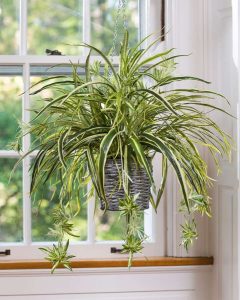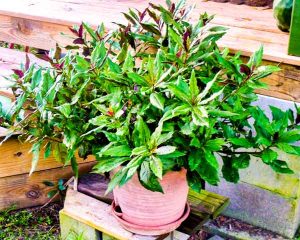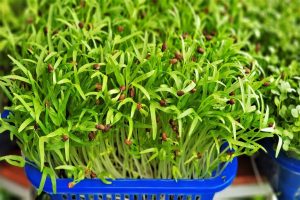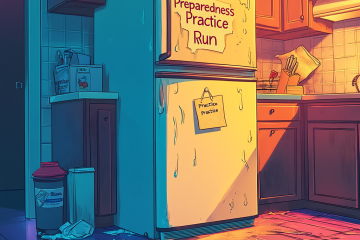
Spider plants are edible
Surprise! Your Houseplants Might Be Your Next Meal: A Guide to Indoor Edible Landscaping
If you’ve ever joked about being so hungry you could eat a houseplant, well, turns out you might be onto something. While we don’t recommend munching on your entire indoor jungle (please don’t eat that philodendron unless you fancy a trip to the ER), some common houseplants are not only edible but surprisingly nutritious. Think of it as your own personal grocery store, minus the annoying shopping cart with the wobbly wheel.
Before We Start Grazing…
Let’s get the serious stuff out of the way first: not all houseplants are your friends when it comes to mealtime. Making a mistake here isn’t like accidentally using salt instead of sugar in your cookie recipe – it could be deadly serious. So before you start eyeing your windowsill like it’s a salad bar, let’s talk about six completely safe, totally edible houseplants that can double as emergency food sources (or just really impressive dinner party conversation starters).
The “Yes, You Can Really Eat These” All-Stars

Sweet potato vine grown as a houseplant
Sweet Potato Vine: The Overachiever
Remember that sweet potato that sprouted in your pantry? Its vining offspring isn’t just pretty – it’s edible from top to bottom. While everyone knows about the tubers hiding below, the leaves are the real stars here. They’re packed with vitamins A, C, and B6, and when cooked, they taste like spinach’s cooler cousin. Grow them in hanging baskets, and you’ve got yourself an edible curtain. Just remember, unlike their root vegetable parents, these leaves can be harvested continuously. It’s the plant that keeps on giving, like that one relative who won’t stop sharing Facebook memes, but actually useful.
Spider Plant: The Suburban Survivor
That unkillable spider plant hanging in your grandmother’s kitchen? Turns out it’s more than just a hardy soul – it’s actually edible. The young shoots and leaves can be steamed or boiled like green beans, though maybe don’t tell grandma you’re eating her prized plant. They’re mild-tasting and packed with vitamins A and C. Think of them as the backup singers of your emergency food concert – not the star of the show, but definitely part of the ensemble.

Chaya houseplant (tree spinach)
Chaya (Tree Spinach): The Tough Guy
This lesser-known houseplant is like the Chuck Norris of the edible plant world – tough, resilient, and surprisingly good for you. The leaves need to be boiled for 5 minutes (no raw salads here, folks), but once cooked, they’re more nutritious than spinach. Keep it pruned, and it’ll happily live in a sunny corner of your home, secretly moonlighting as your backup food supply.

Okinawa Spinach Houseplant
Okinawa Spinach: The Showoff
With its purple undersides and green tops, this plant is the peacock of edible houseplants. But unlike other showoffs, it actually has the goods to back up its flashy appearance. The leaves can be eaten raw or cooked, and they’re packed with protein and iron. It’s like having a tiny, beautiful salad bar growing in your living room. Plus, it grows easily indoors, making it the perfect blend of form and function.
Moringa: The Miracle Worker

Grow a moringa tree as a houseplant
Known as the “miracle tree,” Moringa can be kept small as a houseplant despite its tree status (think bonsai with benefits). The leaves are so nutritious they’re used to fight malnutrition in many parts of the world. Young leaves can be eaten raw, while mature ones are best cooked. It’s basically like growing a multivitamin on your windowsill.

Water spinach seedlings
Water Spinach: The Easy Rider
This plant is so laid back it doesn’t even need soil to thrive. Grow it in water, grow it in soil – it’s not picky. The tender stems and leaves can be eaten raw or cooked, and it grows so fast you might catch it moving if you watch closely enough. It’s perfect for those who want their emergency food supply to also double as a conversation piece: “Oh that? That’s just my apocalypse prevention plan.”
Growing Your Edible Insurance Policy
All these plants thrive in bright, indirect light and standard room temperatures. Think of them as your roommates who actually contribute to the household – they clean the air, look pretty, and could feed you in a pinch. Water them when the top inch of soil feels dry, and this next part is crucial – fertilize them properly.
Speaking of fertilizing, let’s talk about your secret weapon: Mittleider nutrients. While these plants will grow with standard fertilizers, using the Mittleider nutrient mix is like giving your plants a superhero serum. This scientifically formulated blend of micronutrients and macronutrients doesn’t just make your plants grow – it transforms them into produce-pumping powerhouses. Your sweet potato vines will vine harder, your spider plants will spawn faster, and your water spinach might just take over the living room. Plus, since these nutrients are designed for food production, you know you’re feeding your plants (and potentially yourself) the good stuff. Think of it as meal prepping for your emergency food supply.

many houseplants can double as food sources
The Harvest Plan
When harvesting any of these plants, remember the “take a little, leave a lot” rule. You want your plants to keep producing, not end up as a one-time salad. Young leaves are usually the most tender and tasty, but don’t strip any plant bare – that’s just bad manners, and it’ll hurt your long-term food security.
Remember, while we’re having fun here, this information could be genuinely useful in an emergency. Keep your plants healthy, properly identified, and free from any chemicals you wouldn’t want to eat. And maybe don’t tell your houseguests they’re sitting next to tomorrow’s potential dinner – that conversation can wait for the right moment.
And hey, if nothing else, you now have a great answer when someone asks why you have so many houseplants: “Oh, these? This is just my backup grocery store.” Just be prepared for some interesting looks.


